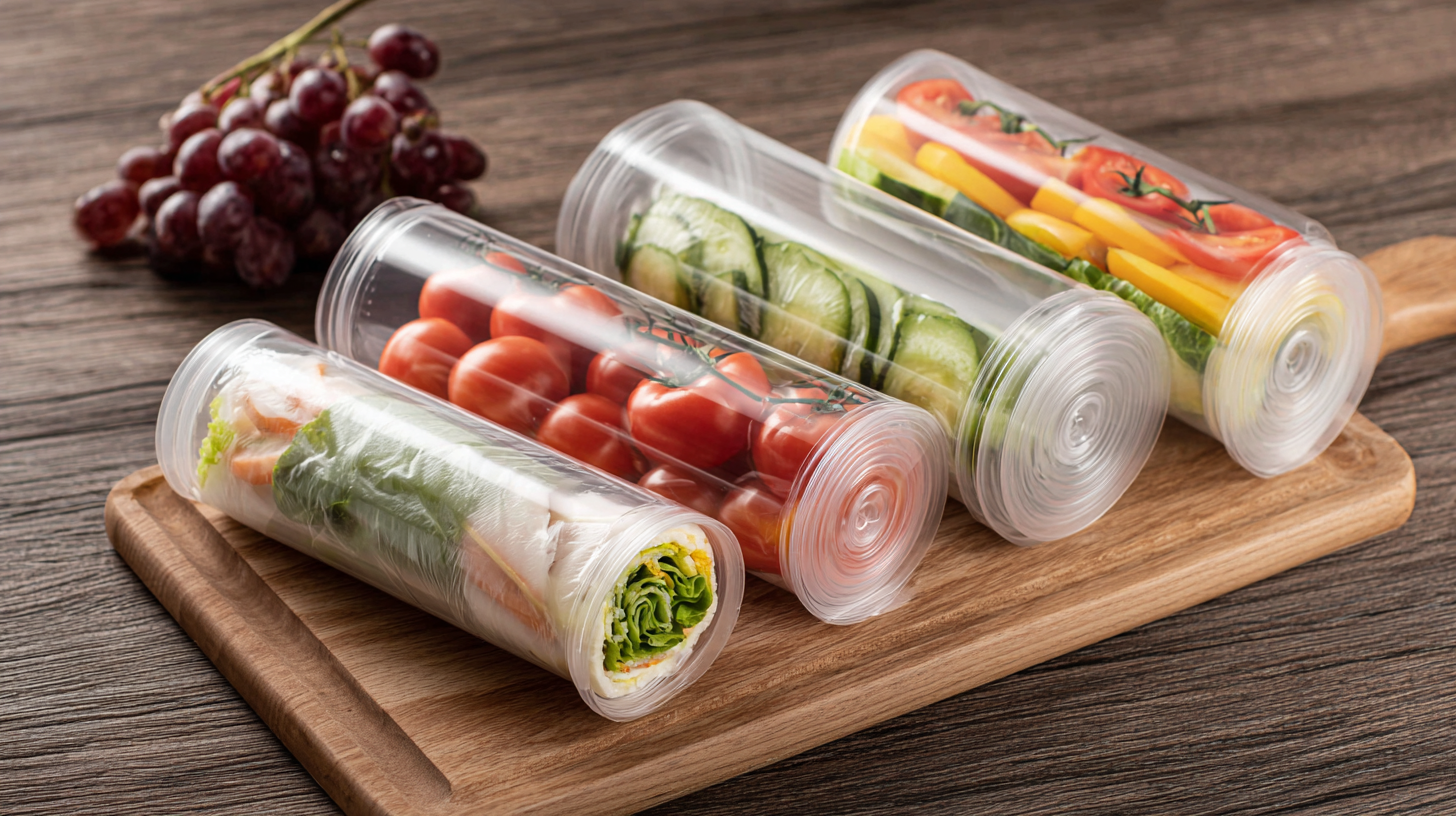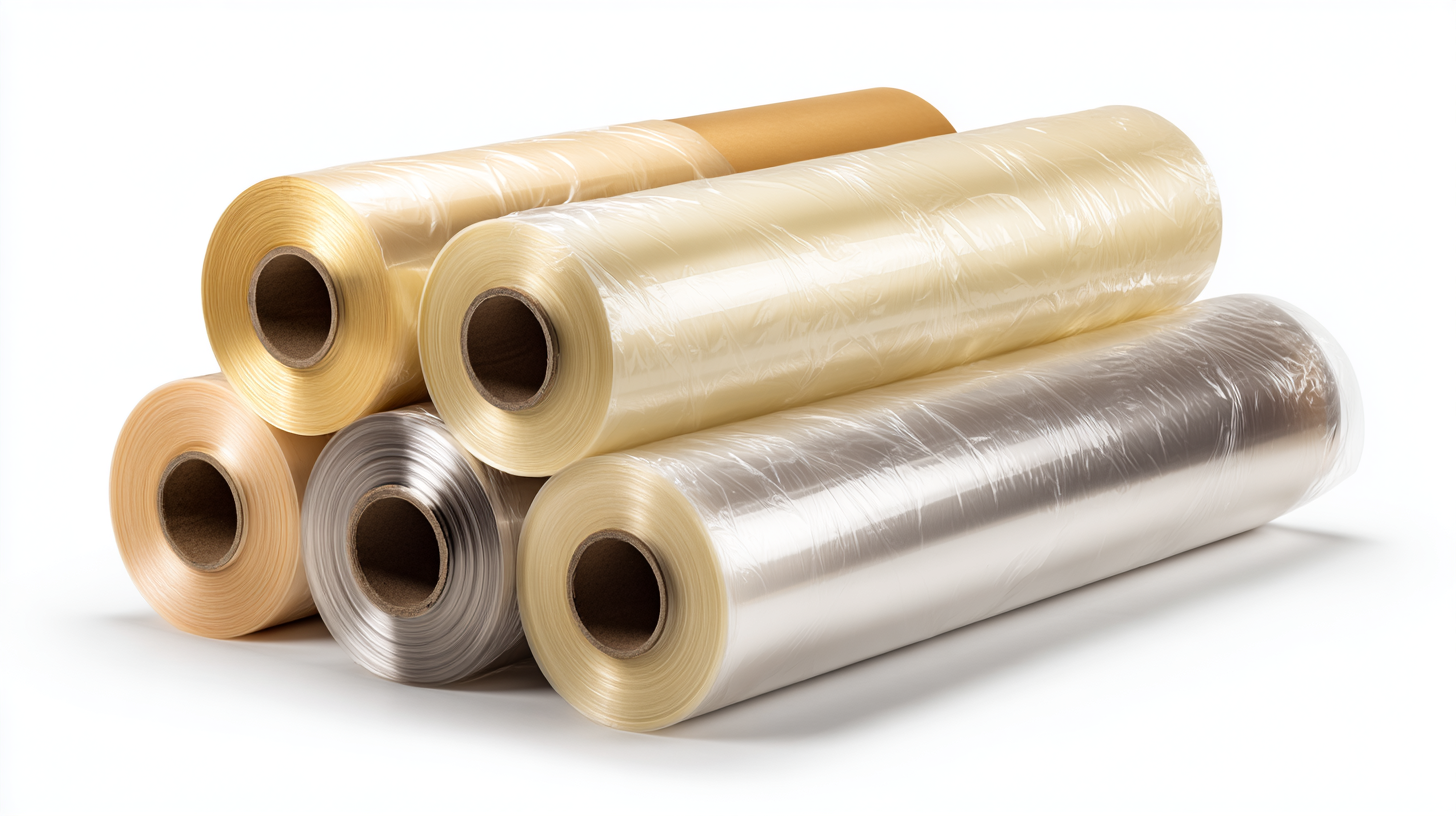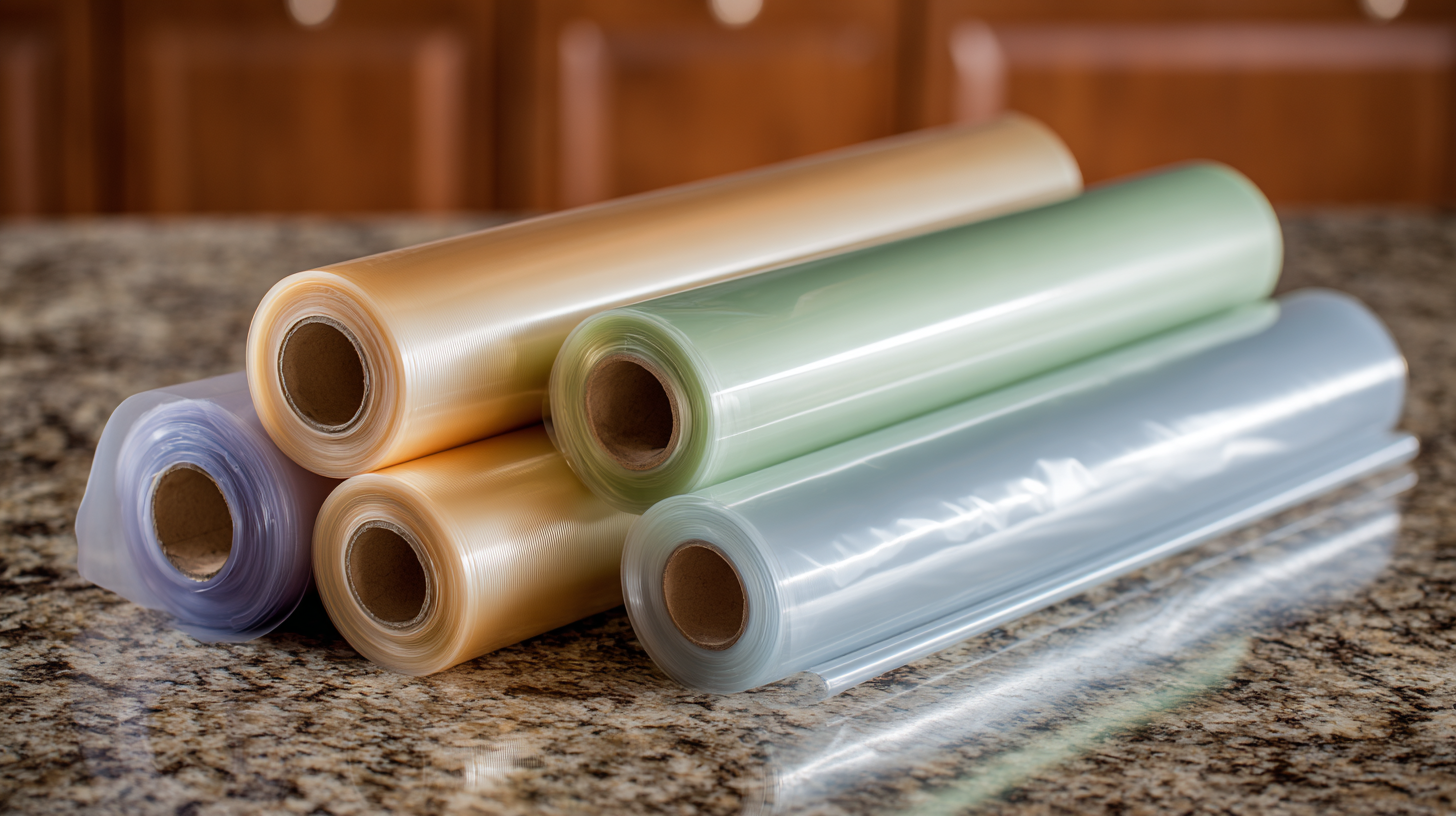5 Ways Best Food Packaging Plastic Roll Transforms Your Food Storage Strategy
In today’s fast-paced world, effective food storage is essential for maintaining freshness and minimizing waste. One of the most innovative solutions that has revolutionized food preservation is the Food Packaging Plastic Roll. This versatile product not only simplifies the organization of your kitchen but also enhances the longevity of your food by creating airtight seals that keep out moisture and air.

With its variety of sizes and thicknesses, the Food Packaging Plastic Roll is perfect for storing everything from fruits and vegetables to leftovers and meal preps. In this blog post, we will explore five transformative ways this packaging solution can elevate your food storage strategy, ensuring that your meals remain delicious and waste is reduced.
Join us as we dive into the practical benefits and creative uses of Food Packaging Plastic Rolls, helping you to optimize your kitchen efficiency like never before.
Innovative Features of Food Packaging Plastic Rolls for 2025
As food storage strategies evolve, the innovative features of food packaging plastic rolls for 2025 are set to make a significant impact. Recent industry reports indicate that the global food packaging market is projected to reach $500 billion by 2027, driven largely by advancements in materials and technology. One of the standout innovations is the development of biodegradable plastic films, which can help reduce environmental impact while maintaining the integrity of food products. According to a study by Smithers Pira, the demand for sustainable packaging solutions is expected to grow at a rate of 5.1% annually over the next five years, indicating a strong shift towards eco-friendly materials.
Additionally, advancements in sealing technology provide enhanced preservation for various food items. Modern plastic rolls incorporate vacuum-sealing capabilities, which can extend the shelf life of perishables by up to 50%. A report from Freedonia Group suggests that vacuum packaging is projected to account for over 20% of the overall packaging market share by 2026. This not only ensures food safety but also minimizes waste, making efficient food storage more accessible and effective for consumers. With these innovations, the future of food packaging plastic rolls looks promising, providing both efficiency and sustainability in food storage solutions.

Environmental Benefits of Using Modern Food Packaging Solutions
 Modern food packaging solutions, particularly plastic rolls, are making significant strides in reducing environmental impact while enhancing food storage efficacy. According to a report by the Food Packaging Institute, over 30% of food waste occurs due to inadequate packaging. By adopting high-quality plastic rolls, businesses can dramatically extend the shelf life of perishable products, leading to less spoilage and waste. This shift not only conserves resources but also minimizes the carbon footprint associated with food production and disposal.
Modern food packaging solutions, particularly plastic rolls, are making significant strides in reducing environmental impact while enhancing food storage efficacy. According to a report by the Food Packaging Institute, over 30% of food waste occurs due to inadequate packaging. By adopting high-quality plastic rolls, businesses can dramatically extend the shelf life of perishable products, leading to less spoilage and waste. This shift not only conserves resources but also minimizes the carbon footprint associated with food production and disposal.
Moreover, advancements in biodegradable and recyclable plastic technologies are paving the way for more sustainable food packaging options. The Ellen MacArthur Foundation emphasizes the importance of transitioning to a circular economy, highlighting that up to 70% of plastic packaging could be recycled or composted with improved design and materials. By utilizing modern food packaging solutions, companies are not only adhering to increasing regulatory demands but are also appealing to environmentally conscious consumers, ultimately fostering a healthier planet while maintaining food quality.
How Advanced Food Packaging Improves Food Preservation Techniques
Advanced food packaging technologies have significantly transformed food preservation techniques, ensuring that perishables remain fresh for longer periods. One of the standout innovations is the development of high-barrier plastic rolls, which act as a protective shield against moisture, oxygen, and other environmental factors. These materials are designed to minimize the transfer of gases and vapors, thereby extending the shelf life of food products. By using these advanced rolls, food manufacturers can effectively reduce spoilage and waste, leading to more sustainable consumption practices.
In addition to extending shelf life, modern food packaging also enhances food safety. The use of antimicrobial coatings and smart packaging solutions helps to inhibit bacterial growth and alerts consumers to the freshness of the product. This kind of innovation not only preserves the flavor and nutritional value of food but also provides peace of mind for consumers about the health implications of their food choices. As technologies continue to evolve, the benefits of using advanced food packaging will only grow, making it an essential component of effective food storage strategies.
5 Ways Best Food Packaging Plastic Roll Transforms Your Food Storage Strategy
This chart illustrates the effectiveness of different food packaging techniques in enhancing food preservation. The data indicates that air exclusion is the most significant factor, followed closely by moisture barrier properties, demonstrating the critical role of advanced packaging solutions in food storage strategies.
Key Trends Shaping the Future of Food Packaging Technology
The future of food packaging technology is being shaped by several key trends, particularly in the use of innovative materials and automation. According to recent reports, the global vacuum packaging market is expected to grow significantly, driven by the increasing demand for plastic materials such as polyethylene, polypropylene, and polyamide. This growth is indicative of a broader trend in the packaging industry, where the shift towards more sustainable and efficient solutions is paramount. By 2032, the vacuum packaging market is projected to witness substantial expansion, reflecting a major transformation in food storage strategies.
Moreover, the folding carton packaging market is also on an upward trajectory, with its size expected to reach approximately $274.98 billion by 2033, demonstrating a compound annual growth rate (CAGR) of 4.5% from 2025 to 2033. This aligns with the rising consumer preference for environmentally friendly packaging alternatives, which is becoming increasingly crucial in a landscape where urbanization impacts food storage needs. Additionally, technological advancements in packaging automation are set to redefine the sector further, enhancing efficiency and reducing costs across various production lines. As such, the food packaging industry is not only responding to current trends but is also actively paving the way for a more sustainable future.
Cost-Effective Strategies for Implementing Plastic Rolled Packaging in Your Kitchen
As the move towards reducing plastic waste gains momentum, incorporating plastic rolled packaging into your kitchen can transform your food storage strategy while also embracing cost-effective practices. By utilizing plastic rolls, you can create airtight seals that prolong the freshness of your food, reducing waste and saving you money in the long run. Furthermore, this type of packaging is lightweight and flexible, making it easy to store varying quantities of food without taking up much space, which is essential for any efficient kitchen.
The recent shift towards sustainable alternatives also highlights how plastic rolled packaging can align with eco-friendly practices. Bioplastics, made from renewable resources, present an innovative solution to traditional plastic, offering similar benefits with a significantly lower environmental impact. By leveraging these advancements, you can not only enhance your food storage capabilities but also contribute to a reduction in plastic waste, addressing the growing concerns surrounding packaging waste. As supermarkets adjust their strategies to cut down on plastic, individual consumers have the power to make impactful changes right within their homes.
5 Ways Best Food Packaging Plastic Roll Transforms Your Food Storage Strategy
| Storage Method | Benefit | Cost-Effectiveness | Longevity | Environmental Impact |
|---|---|---|---|---|
| Vacuum Sealing | Reduces spoilage | High savings on wasted food | Up to 5 times longer | Can be recyclable |
| Freezer Storage | Prevents freezer burn | Cost effective bulk buying | 6 months to 1 year | Positive if recycled properly |
| Marinating in Bags | Enhanced flavor infusion | Less marinating waste | Until marinated | Limited environmental impact |
| Sous Vide Cooking | Precision cooking | Reduces energy costs | Long-lasting meal prep | Improved as reusable bags gain popularity |
| Portioning | Easy to grab and go | Saves time and money | Until opened | Encourages smaller portions |

 中国
中国